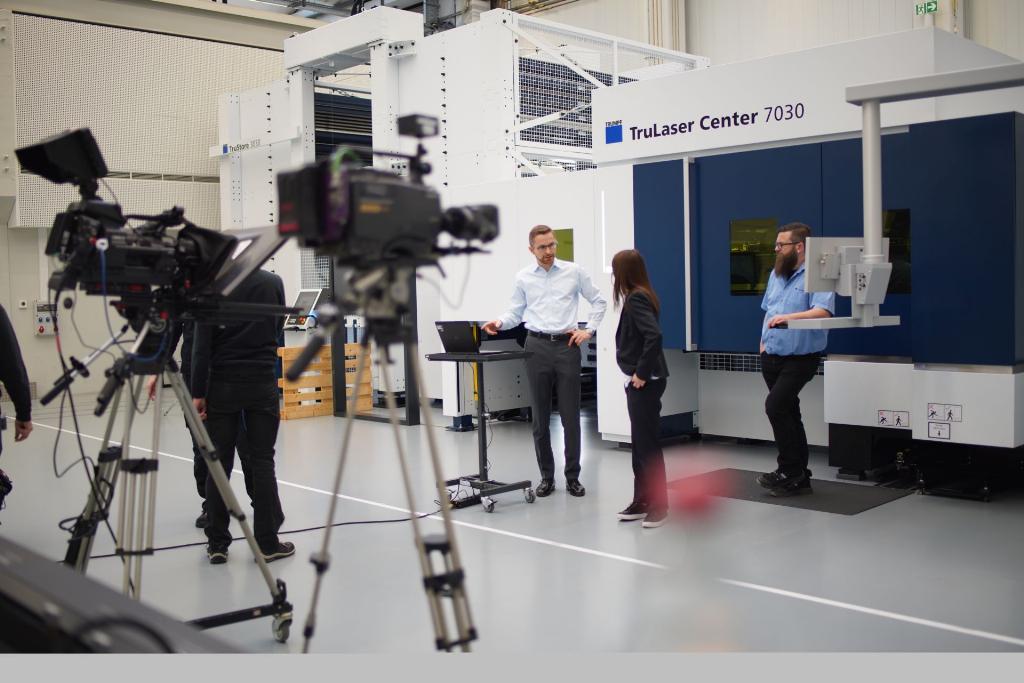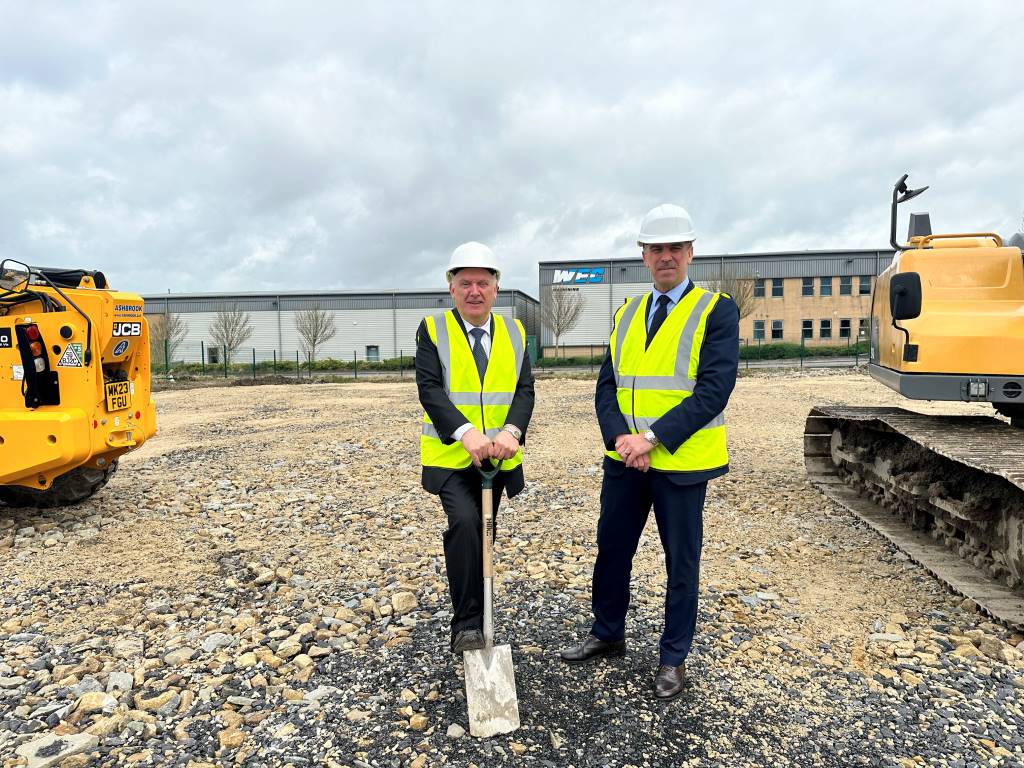Virtually innovative

COVID-19 has forced businesses to do things differently – press events for example. In June, machine tool and laser technology specialist Trumpf held its first remote press conference. Dave Tudor was among the virtual attendees.
“Welcome to our first COVID resilient, socially distanced, 100% digital press day,” began Trumpf UK’s managing director, Lee Moakes. “Considering we’ve been adopting the fourth industrial revolution for about a decade now, I think it’s somewhat ironic that something as simple and primitive as a pathogen has pushed us into such a rapid switch towards remote communication so quickly.”
He continues: “We’ve all had to quickly adapt in terms of the way we work and do business. Whilst essentially being social creatures – we still prefer interactive face to face contact to build relationships and truly feel a connection – coronavirus has impacted us all in ways we simply couldn’t imagine six months ago. We’ve relied heavily on technology to keep us connected.”
Indeed. Moving forward, meeting people face to face will be just as important as it ever was – but this will be complemented by the use of digital communication technologies when physical contact is perhaps not practical, necessary, or even possible. Physical meetings will be viewed as a more highly valued commodity.
The show must go on
The pandemic outbreak also meant that Trumpf was unable to host its annual Intech in-house trade show in Ditzingen, Germany – at least in the physical sense.

So the company went digital. Around 1,600 virtual visitors from 56 countries (including 92 from the UK) took part in the Intech virtual trade show. Trumpf set- up an online platform using ‘topic dialogs’ where experts presented new machines and technologies. Visitors could register for specific program items in advance and during the event participants were able to address their questions live to Trumpf experts.
COVID fightback
Trumpf’s financial year runs from July to June and this time last year the company was on a real high with sales of £60 million recorded at the end of FY 2018/19. Trumpf began FY 2019/20 strongly with the business forecasting revenues slightly up on the previous year at £61 million.
Then, COVID-19 struck and the world was turned upside down. Along with many other businesses, the pandemic impacted significantly on customer demand and also Trumpf’s capability to supply and install machines. The general feeling now is that the company will end this financial year around 15% below the original target.
The past few months have revealed many shining examples of how manufacturers have rallied to produce vital components in the battle against COVID-19 – particularly with orders placed through the VentilatorChallengeUK consortium.
Trumpf is well-established in the medical sector, but at the press conference, Lee Moakes cited a number of customers that have used Trumpf equipment to good effect in the war against the pandemic.
For example, Darwen, Lancashire-based WEC Group, which in the past year has added three TruLaser 5000 series laser cutting machines to its portfolio, won a contract to produce over 8,000 precision machined parts which involved laser cutting, folding and powder coating. Trumpf laser and press braking equipment was used extensively.
Initially intended for its own internal use, WEC also developed its own range of foot operated hand sanitiser dispensers which it now intends to bring to the marketplace.
Similarly, Sandbach, Cheshire company, Newfield Fabrications, which has made significant investments in automation equipment from Trumpf this year (a TruBend Cell 5000, TruLaser 5000 series laser cutting machine and a TruStore storage system) manufactured 3,000 bed frame kits for the NHS. According to the company, the introduction of Trumpf equipment has contributed significantly to productivity increases of around 400%.
New technology
Trumpf has been active in the 3D printing/rapid prototyping market for some time now but a new development is the recent introduction of the TruPrint 2000 machine to its additive manufacturing product offering.
“Effectively, the TruPrint 2000 bridges the gap between the existing 1000 machine – which is essentially an entry-level model – and the more advanced 3000 and 5000 variants,” explains Trumpf UK’s sales director Gerry Jones.
“Price-wise – typically around £400,000 depending on options – the 2000 is closer to the 1000 model but with more features. It has a build cylinder diameter of 200mm and can accommodate parts up to 200mm in height. Customers can choose between single or double laser options and the beam diameter (spot size) is 55µm. A really useful feature is powder bed and melt pool monitoring to ensure process security.
“Powder bed monitoring is via a camera system with image processing which identifies any raised positions, and melt pool monitoring, also camera-based, is carried out through the machine’s on axis sensor system for an ‘on machine’ evaluation to reference part data, highlighting any process deviations.”
He continues: “In addition, the baseplate can be pre-heated up to 200°C which helps to avoid shrinkage and cracking. The machine can also be operated in an inert (nitrogen or argon shielding gas) environment which is essential for processing materials such as titanium in medical and aerospace applications.”
According to Mr Jones, the 55µm beam diameter is smaller than many competitor models but there’s a reason why Trumpf went down this road: “The smaller the spot size, the higher definition you can produce on the machine,” he asserts. “The rub is that it makes the process slightly slower, but that’s a small price to pay for better quality, higher definition and finer features.”
Of course if maintaining optimum production speeds is a priority, any shortfalls can always be negated through the use of a double laser option.
The introduction of the TruPrint 2000 means there are now four additive manufacturing machines in the TruPrint range: the 1000, 2000, 3000 and 5000. A brand new development with the 1000 is a stacked substrate plate option called Multiplate which allows in-process changeovers – the obvious benefits being higher productivity, reduced downtime and less manual intervention.
Take the tube
Another new product from Trumpf will appeal not only to companies looking to take their first steps into laser tube processing but also more expert users looking to expand their production capacity.
The TruLaser Tube 3000 fiber is cost-effective – even at low to medium capacity utilisation – and easy to operate thanks to a number of automated features. The machine enables the versatile processing of tubes and profiles and replaces conventional tube processing steps such as sawing, drilling and milling.

The 3000 fiber covers a broad range of applications including profiles, round tubes and flat steel bars. The 2kW solid-state laser performs high-speed cutting of mild steel, stainless steel, aluminium, and non-ferrous metals such as copper and brass.
“We’ve included compressed air cutting as a cost-effective standard feature on the machine,” explains Mr Jones. “It can actually run on three different cutting gases – compressed air; nitrogen or oxygen – but the compressed air option runs on standard workshop pressure compressed air so there’s no need for an additional dedicated compressor.”
An extensive set of cutting data is stored on the machine. The 3000 fiber can cut tubes with diameters of up to 152mm and profiles with an outer circumference of up to 170mm. The self-centring clamping technology, which is designed to hold the tube in place and position it correctly during machining, automatically adapts to the tube dimensions without requiring manual set-up by the operator.
The machine also configures other important settings automatically. The AdjustLine function modifies cutting parameters at the touch of a button to ensure reliable cutting of lower-quality materials and SeamLine Tube detects weld seams and markings on the inner and outer surfaces of the tubes, helping operators check that the tubes are correctly aligned in the machine and that the weld seam is in the desired position in the finished part.
With its easy set-up and high degree of automation, the TruLaser Tube 3000 fiber is a user-friendly machine that represents a cost-effective option for small batch sizes. Alternatively, through the optional LoadMaster Tube automated loading system, the machine is also a cost-effective choice for high-volume production runs.
Ready for the Smart factory
Users can make changes to the machine's production schedule or keep an eye on the machine using an app, making it even easier for the operator to keep track of the entire machining process.
A secure, OPC UA-based data interface is included to connect the machine to an ERP or MES system or to a cloud application, for example. Trumpf machine apps provide information on program runtimes and machine capacity utilisation.
Trumpf www.trumpf.com/en_GB/














